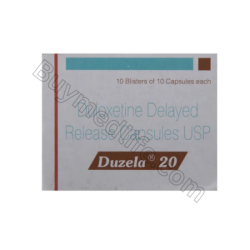Sumatriptan 50mg Treats Headache & Migraine, Buy @ 2.0/ Tablet
-550x550.png)
- Stock: In Stock
- Brand: Sun Pharmaceuticals
- Model: Sumatriptan
- Active Ingredient: Sumatriptan
- Treatment: Headache
Available Options
Sumatriptan 50mg is used to treat migraine headache symptoms
(severe, throbbing headaches followed by nausea or intolerance to noise and
brightness). Sumatriptan belongs to the class of medicine known as serotonin
receptor agonists.
Adults experiencing acute migraines with or without aura are advised to use sumatriptan pills.
What is the most crucial information regarding
sumatriptan tablets that I need to know?
Serious negative effects of sumatriptan pills include:
• Heart attacks and other cardiovascular issues. Death could result from heart issues.
If you experience any of the following signs of a heart
attack, stop taking Sumatriptan pills and seek immediate emergency medical
attention:
• A persistent or recurring ache in the middle of your chest that lasts more than a few minutes.
• Your jaws, neck and chest feeling noticeably heavy, compressed, or tight.
• Your arms, back, neck, jaw, or stomach may be in pain or uncomfortable.
• Breathing problems, either with or without chest pain
• Developing a chilly sweat
• Dizziness or vomiting
• Experiencing dizziness
Limits on Use:
• Use only if a migraine headache diagnosis has been made with certainty. Before giving sumatriptan tablets to treat any additional episodes, reevaluate the patient's diagnosis of migraine if the first migraine attack that was treated with the medication had no effect.
• Tablets containing sumatriptan are not recommended for migraine attack prevention.
• Sumatriptan pills' efficacy and safety in treating cluster headaches are unknown.
What potential negative effects might sumatriptan pills
have?
These detrimental impacts are as follows:
• Your fingers and toes changing in color or feeling differently (Raynaud's syndrome)
• Gastrointestinal and colonic ischemia episodes (intestinal and intestinal issues).
Gastrointestinal and colonic ischemia episodes present
with the following symptoms:
• A sudden or intense stomachache
• Bloating following meals
• Losing weight
• Dizziness or sickness
• Diarrhea or constipation.
• Bloody stools
• Fever
Difficulties with peripheral vascular ischemia, which
affects the blood flow to your legs and feet. Peripheral vascular ischemia
manifests as:
• Suffering from hip or leg pain and cramps
• Muscular rigidity or heaviness in your legs
• Throbbing or painful pain in your toes or feet when you're at rest
• Your legs may feel tingly, numb, or weak.
• Both or one leg or foot may experience coldness or change in color.
Dosage and management
Dosage Details
Sumatriptan pills should be used in doses of 25, 50, or 100 mg. Although doses of 100 mg might not have a bigger effect than doses of 50 mg, they might be more effective than doses of 25 mg. adverse responses may be more likely at higher doses [see CLINICAL STUDIES (14)].
A second dose may be given at least 2 hours after the first dose if the migraine does not go away after 2 hours of taking sumatriptan pills or reappears after a brief improvement. The daily dose cap is 200 mg for a full day.
Precautions and Warnings
1. Pain/Tightness/Pressure in the Jaw, Neck, Chest,
and/or Throat
Following sumatriptan tablet therapy, tightness, pain, pressure, and heaviness in the precordium, throat, neck, and jaw are frequently reported and are typically not cardiac in origin.
If these patients are at high cardiac risk, nevertheless, you should have a cardiac exam done. Sumatriptan tablets should not be used by CAD patients or people who have Prinzmetal's variant angina.
2. Overmedication Headache
Exacerbation of headache (medication overuse headache) may result from using acute migraine medications excessively (for example, ergotamine, triptans, opioids, or combinations of these medications for 10 or more days per month).
Overuse of medication headaches can manifest as a noticeable increase in the frequency of migraine events or as regular headaches that resemble migraines. Treatment for withdrawal symptoms (which sometimes include a temporary exacerbation of headache) and detoxification of patients, which includes removal from the misused medicines, may be necessary.
3. Heightened Blood Pressure
Rarely, patients treated with 5-HT1 agonists, including those without a history of hypertension, have seen a significant increase in blood pressure, including a hypertensive crisis with acute impairment of organ systems.
Patients on sumatriptan should have their blood pressure checked. Patients with uncontrolled hypertension shouldn't take sumatriptan tablets.
Overdosage
Convulsions, tremor, paralysis, lethargy, ptosis, erythematic of the extremities, irregular breathing, cyanosis, ataxia, mydriasis, salivation, and lacrimation are symptoms of overdose in animals, which can be lethal.
Sumatriptan has an elimination half-life of about 2.5 hours, so patients should be monitored for at least 12 hours or as long as symptoms or signs linger after taking too many sumatriptan tablets.

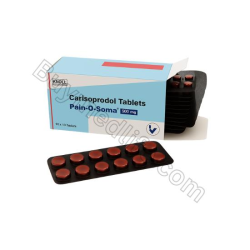
-250x250.png)
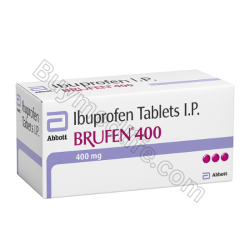

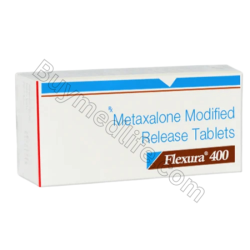
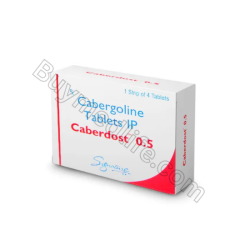

-250x250.png)
